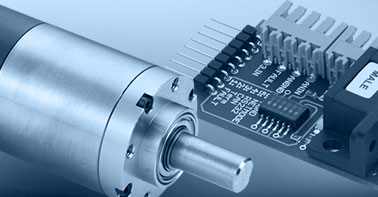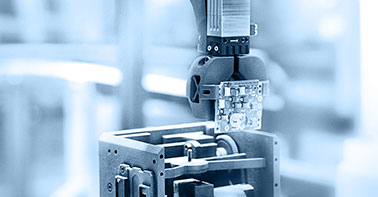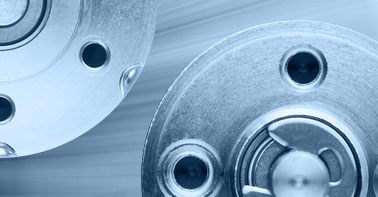- info@ems-ltd.com
- 0118 9817391
Home > PR > Robotics’ role in alternative medical treatments
Robotics’ role in alternative medical treatments
27/06/2023 - Motorisation drives transcranial magnetic stimulation (TMS) treatment
27th June 2023
Filed under:
Ems, Faulhaber, Tms

Around one billion people are currently suffering from a mental health disorder, according to statistics from the World Health Organisation. Many patients are prescribed medication or counselling sessions to treat their condition, but not all patients find relief. Increasingly, alternative treatments such as transcranial magnetic stimulation (TMS) are being researched for such cases. Here, Dave Walsha, sales manager at DC motor supplier EMS, explores TMS and its underlying technology.
Rates of ‘common’ mental health disorders such as depression and anxiety rose by more than 25 per cent in 2020, as the Covid-19 pandemic hit. In the UK, the presence of moderate to severe depressive symptoms in adults increased from ten per cent pre-pandemic to 19 per cent by June 2020.
Common treatments for mental health conditions include medication, as well as therapy and counselling services. But not all patients find the relief they’re seeking in traditional treatments, and as such, more novel methods are being researched to help those with mental health conditions get the care they need.
One example of such a treatment is TMS. During treatment, the patient sits on a chair and a treatment coil is applied to their head. A TMS machine passes an electric current through the magnetic coil to generate a magnetic field, typically around two Tesla — a similar strength to an MRI scanner. This magnetic field is used to either stimulate or inhibit neurons in the cerebral cortex, the outer layer of the brain.
Exact locations and frequencies used for treatment vary depending on the condition being treated. When used for depression, the coil is placed over areas in the brain responsible for emotional control. For patients diagnosed with depression, these areas are often ‘underactive’ — by stimulating the neurons, this part of the brain can be reactivated, alleviating the negative symptoms experienced by the patient.
Repetitive TMS treatment can influence brain function, resulting in positive effects lasting long after the treatment has finished. In fact, some studies of patients with depression have reported the clinical benefits of TMS are still present months after completing a course.
Ensuring precise treatment
Crucial to the success of TMS treatment is the precision of the coil positioning. A course of TMS treatment typically comprises of one session daily, over a period of four to six weeks. Repetition is key in achieving the best possible patient outcome, but in order to do this, the machine must be able to accurately position itself each time.
Such accurate positioning is difficult to achieve manually. As a result, robotic arms have been developed to precisely position the coil, based on previous scans and measurements of the patient’s head. An optical monitoring system can be used to detect any head movements made throughout the treatment and allow the TMS machine to compensate accordingly.
Powered by motors
Motors used within these robotic arms must meet stringent requirements. For those motors closest to the coil, high electromagnetic compatibility (EMC) immunity is required. This is due to the strength of the magnetic field emitted, and to minimise any interference caused by the equipment.
A high starting torque is desirable for the machine to adjust quickly to sudden head movements. With the repeated nature of TMS treatments, it’s likely that the machine will be running for extended periods every day. As a result, the motors must also be able to work reliably, and without overheating or any loss of precision.
To achieve this, gearheads with a reduced backlash should be chosen, with encoders to guarantee precise positioning. A variety of small brushless DC motors can provide the high levels of torque required in the arm for it to adjust quickly, while still being compact enough to allow the machine to fit comfortably within a treatment room and move around the patient.
Finding micromotors capable of meeting such requirements while being compliant to medical regulations can be a challenge. FAULHABER motors, supplied in the UK and Ireland by EMS, have already been trialled and successfully implemented in a variety of medical applications, including TMS machines.
Motorisation is essential in many medical technologies, and TMS is no exception. Delivering treatments with high levels of precision time and time again is made possible with robotics. As the medical field continues to make advancements and explore other treatments, there’s no doubt that motors will continue to play a powerful and significant role.
- Categories / Tags
- 1024...SR
- AEMT
- AESL
- Acceleration
- Agriculture
- Agritech
- Autoclave
- BHS
- BHT
- BHx
- BLDC
- BP4
- BRC Series
- BX4
- BXT
- BeBionic
- Bearings
- Bespoke
- Brushed
- Brushed DC Motors
- Brushless
- Brushless DC Motor
- Brushless DC Motors
- Brushless Dc Motors
- Brushless Motor
- Buhler
- Building Automation
- COVID
- CXR
- Catalogue
- Company Update
- Controller
- Coreless
- Coventry
- Custom
- Custom Design
- Custom Drive Design
- DC Motor
- DC Motor Supplier
- DMN
- Dc Motor
- Design
- Dimatech
- Drones
- EDS
- EMS
- EMS News
- EV
- Encoder
- Ewellix
- Exoskeleton
- Expo
- FAULHABER
- Factory
- Faulhaber
- Flat
- GPT
- Galil
- Gearhead
- IEF3
- IMC
- Industry 4.0
- Industry 4.0. Blog
- Inspection
- KAG
- LL06
- LM
- LVC
- Laboratory Automation
- Linear
- Linear Actuator
- Logistics
- M50
- M80
- MC3
- Maintenance
- Manufacturing
- Mechatronics
- MedTech
- Medical
- Medical Devices
- Medical Imaging
- Medtech
- Merkel
- Motion Control
- Motor
- Motor Supplier
- Neurosurgery
- New
- Nidec
- Nidec Servo
- Optical
- Pain Relief
- Piezo
- Piezomotor
- Pipeline
- Planetary
- Planetary Gearheads
- Point Of Care
- Precision
- Precistep
- Process
- Production
- Quickshaft
- Robot
- Robotics
- Robots
- SKF
- SR Series
- Samples
- Servomotors
- Small DC Motor
- Software
- Space
- Sponsorship
- Stepper
- Stepper Motor
- Stepper Motors
- TMS
- Testing
- Trade Show
- 1016
- 1660
- 1935
- 2017
- 2018
- 2020
- 2021



